Can Dogs Eat Garlic Bread? Vet Explains the Toxic Dangers!
- 15 Apr 2025 10:44
The warm, inviting aroma of garlic bread wafting from the kitchen is enough to make anyone's mouth water – including your dog's! As you reach for a slice of that buttery, garlicky goodness, you might see your furry friend gazing up with hopeful eyes, perhaps even offering a polite paw. It's a common scenario that leads many well-meaning pet owners to ask: can dogs eat garlic bread? While sharing our food often feels like sharing affection, in the case of garlic bread, the answer from veterinarians and pet safety experts is a definitive and resounding **NO**. Garlic bread contains ingredients, most notably garlic itself, that are toxic to dogs, making it a dangerous and potentially harmful snack.
This comprehensive guide will delve into the specific reasons why garlic bread is unsafe for canine consumption. We will explore the toxicity of garlic and other common ingredients like onions, the dangers posed by high fat and salt content, and why even a small amount can be problematic. Based on veterinary knowledge and adhering to E-E-A-T (Expertise, Authoritativeness, Trustworthiness) principles, our goal is to provide clear, life-saving information to protect your beloved pet.
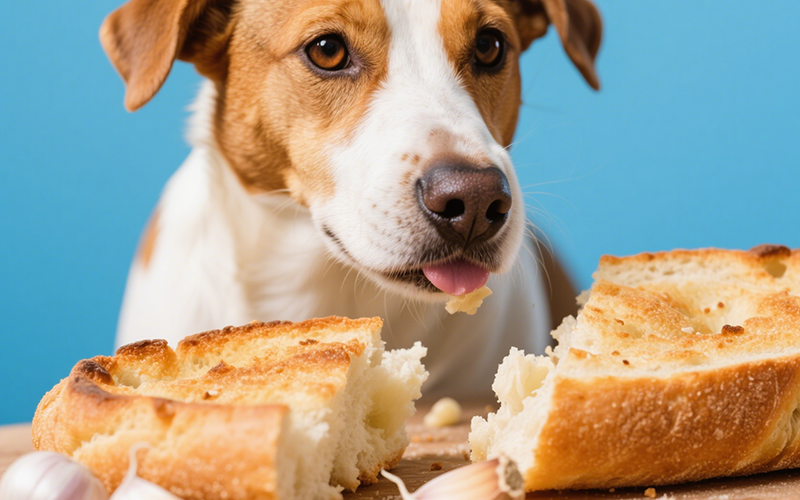
Deconstructing Garlic Bread: Unsafe Ingredients for Dogs
To understand the danger, let's break down the typical components of garlic bread:
Bread: Usually made from refined white flour, offering little nutritional value (low fiber, vitamins) and potentially causing issues for dogs with wheat sensitivities or allergies.
Garlic (Fresh, Powdered, or Roasted): The star ingredient for humans, but the primary toxin for dogs.
Butter or Oil: Used generously for flavor and texture, contributing significant amounts of fat.
Salt: Often added for flavor enhancement.
Herbs: Parsley or other herbs might be included (parsley itself is generally safe in small amounts, but irrelevant given the garlic risk).
Cheese (Optional): Sometimes topped with cheese, adding more fat, salt, and potentially causing issues for lactose-intolerant dogs.
Onion Powder (Sometimes Hidden): Occasionally included in garlic salt or seasoning blends used, adding another layer of toxicity.
As you can see, several components, especially the namesake ingredient, pose significant risks to dogs.
The Primary Danger: Garlic Toxicity in Dogs
This is the non-negotiable reason why dogs cannot eat garlic bread. Garlic (Allium sativum) belongs to the Allium family, alongside onions, leeks, chives, and shallots. All members of this plant family contain organosulfur compounds, primarily **thiosulfates**, which are toxic to dogs (and cats).
How Garlic Harms Dogs:
Mechanism of Toxicity: When ingested by dogs, thiosulfates cause oxidative damage to red blood cells. This damage leads to the formation of Heinz bodies within the cells, making them fragile and prone to rupture (hemolysis).
Resulting Condition: Hemolytic Anemia. This is a serious condition where the body destroys its red blood cells faster than it can produce them. Red blood cells are essential for carrying oxygen throughout the body. A lack of sufficient healthy red blood cells means vital organs don't receive enough oxygen, which can lead to severe health consequences.
Gastroenteritis: Garlic ingestion can also directly irritate the stomach and intestines, causing vomiting, diarrhea, abdominal pain, drooling, and loss of appetite.
Symptoms of Garlic Toxicity:
Symptoms may not appear immediately, sometimes taking 2-4 days to manifest as anemia develops. Watch for:
Lethargy, weakness, lack of energy
Pale or whitish gums (a sign of anemia)
Rapid breathing (panting) or increased heart rate
Reluctance to move, exercise intolerance
Vomiting
Diarrhea
Drooling
Abdominal pain
Jaundice (yellowing of skin/eyes, less common)
Dark-colored urine (reddish or brown)
Collapse (in severe cases)
Important Considerations about Garlic Toxicity:
All Forms Are Toxic: Raw garlic, cooked garlic, roasted garlic, garlic powder, garlic salt – all contain the toxic compounds and are dangerous. Cooked garlic is NOT safe for dogs, despite some myths suggesting otherwise. Cooking does not neutralize the thiosulfates sufficiently. Garlic powder is particularly potent as it's concentrated.
Dosage Matters, But Sensitivity Varies: While a larger dose is generally more dangerous, even small amounts can cause problems, especially with repeated exposure or in sensitive dogs. Japanese breeds like Akitas and Shiba Inus are reportedly more susceptible. Smaller dogs are at greater risk from smaller amounts than larger dogs.
Cumulative Effect: Repeated small exposures can be just as dangerous as a single large ingestion, leading to progressive red blood cell damage and anemia over time.
The presence of garlic makes garlic bread toxic and fundamentally unsafe for canine consumption.
Secondary Dangers: Other Unhealthy Ingredients
Beyond the severe risk of garlic toxicity, other ingredients in garlic bread contribute to its unsuitability for dogs:
1. High Fat Content (Butter/Oil)
Pancreatitis Risk: Garlic bread is typically soaked in butter or oil. High-fat foods are a major trigger for pancreatitis, a painful and potentially life-threatening inflammation of the pancreas that often requires hospitalization. Symptoms include severe vomiting, diarrhea, abdominal pain, lethargy, and dehydration.
Gastrointestinal Upset: Even without full pancreatitis, the high fat content can easily cause vomiting and diarrhea.
Obesity: Garlic bread is very calorie-dense due to fat and carbohydrates, contributing to weight gain and associated health problems like arthritis and heart disease if fed regularly (which should never happen).
2. Excessive Salt
Sodium Overload: Garlic salt or added table salt contributes unnecessary and potentially harmful levels of sodium.
Health Issues: High sodium intake can lead to increased thirst/urination, dehydration, vomiting, diarrhea, elevated blood pressure, and can be particularly dangerous for dogs with heart or kidney conditions. Large, acute ingestion can cause sodium ion poisoning.
3. Refined Carbohydrates (Bread)
Low Nutritional Value: White bread offers minimal fiber, vitamins, or minerals ("empty calories").
Potential Allergens: Wheat is a common allergen for some dogs.
Blood Sugar Spikes: Refined carbs can cause rapid spikes in blood sugar.
4. Optional (But Common) Harmful Additions
Onion Powder:** Often included in garlic salt or seasoning blends, onions are also toxic (contain thiosulfates) and cause hemolytic anemia, just like garlic.
Cheese:** Adds more fat and salt, and can cause digestive issues in lactose-intolerant dogs.
These factors compound the reasons why the answer to "can dogs eat garlic bread?" is a definitive no.
"What About Just a Tiny Crust?" Why Even Small Amounts Are Risky
It's tempting to think a small nibble won't hurt, but even tiny amounts of garlic bread are problematic:
Concentrated Toxins:** Garlic powder, often used, is highly concentrated. Even a small piece of bread can carry a significant dose of garlic relative to a dog's size.
High Fat/Salt Delivery:** A small piece still delivers a burst of unhealthy fat and salt.
Cumulative Risk:** Repeated "tiny tastes" add up over time, increasing the risk of chronic anemia or contributing to obesity and pancreatitis risk.
Sets a Dangerous Precedent:** Encourages begging for human food and normalizes feeding potentially harmful items.
There is no "safe" amount of garlic bread for a dog.
Emergency Protocol: What To Do If Your Dog Eats Garlic Bread
Accidents happen. If your dog consumes garlic bread, immediate assessment and action are necessary:
Estimate Quantity and Ingredients:** How much was eaten? Do you know if it contained just garlic, or potentially onion powder too? Was it particularly greasy or cheesy?
Remove Access:** Prevent further ingestion.
**Contact Your Veterinarian or Pet Poison Helpline IMMEDIATELY.** Do not wait for symptoms to appear. Garlic toxicity is serious, and early intervention is crucial. Pancreatitis is also a concern.
Provide Detailed Information:** Tell the vet/helpline:
What was eaten (garlic bread, potential onion content).
Estimated quantity consumed.
Time of ingestion.
Your dog's breed, age, weight, and any pre-existing health conditions.
Any symptoms currently observed (vomiting, lethargy, etc.).
Follow Veterinary Advice:** They may recommend inducing vomiting (ONLY if safe and instructed by them within the right timeframe), administering activated charcoal, hospitalization for monitoring (blood work to check for anemia, monitoring for pancreatitis), IV fluids, or other supportive care depending on the amount ingested and the dog's condition.
Monitor Closely:** Even if sent home, watch carefully for 2-5 days for developing signs of anemia (pale gums, lethargy, weakness, rapid breathing) or pancreatitis (vomiting, abdominal pain). Report any changes to your vet immediately.
Knowing what to do if dog eats garlic bread involves prompt contact with veterinary professionals.
Safe and Healthy Treat Alternatives
Instead of dangerous garlic bread, offer treats that are truly safe and beneficial:
| Treat Option | Why It's Better Than Garlic Bread |
| Garlic Bread | DANGEROUS/TOXIC: Garlic/onion toxicity (anemia), high fat (pancreatitis), high salt, low nutrition. |
| Plain Cooked Lean Meats (Chicken, Turkey, Beef) | Excellent source of protein, no toxic ingredients, low fat (if lean/trimmed). Highly palatable. A safe savory treat. |
| Dog-Safe Vegetables (Carrots, Green Beans, Cucumber) | Low calorie, high fiber, vitamins, safe crunch. No fat/salt/toxins. |
| Dog-Safe Fruits (Blueberries, Apple Slices - no core/seeds) | Vitamins, antioxidants, fiber. Natural sugars (use moderately). No fat/salt/toxins. |
| Commercial Dog Biscuits/Treats (High Quality) | Specifically formulated for dogs, nutritionally balanced (as treats). Choose reputable brands, check ingredients, monitor calories. |
Always ensure treats make up no more than 10% of your dog's daily caloric intake.
Need Fast Pet Safety Advice? PettureX Can Assist!
When faced with urgent questions about potential pet poisonings or food safety, having quick access to information is critical. The PettureX App offers innovative AI-powered tools for pet parents:
Food & Object Identification: Use your phone's camera to quickly identify foods like garlic bread and get general pet safety warnings.
AI Symptom Checker: If your pet ingests something harmful and develops symptoms, input the details for preliminary AI analysis to help guide your communication with your vet.
24/7 AI Vet Consultation: Get immediate answers to critical questions like, "What are the signs of garlic toxicity in dogs?" or seek guidance on managing minor health concerns anytime, day or night.
PettureX provides valuable, instant support. Remember, however, that it offers preliminary guidance and **cannot replace a professional veterinary diagnosis, treatment, or emergency care.** Always contact your local veterinarian immediately for definitive medical advice, especially in cases of suspected toxicity.
Conclusion: Garlic Bread Belongs Nowhere Near Your Dog
In conclusion, the definitive answer to "can dogs eat garlic bread?" is an absolute **NO**. It is a dangerous food for dogs due to multiple hazardous ingredients.
Key Reasons to Keep Garlic Bread Away:
Garlic (and potentially Onion) Toxicity: Causes damage to red blood cells, leading to potentially life-threatening hemolytic anemia. All forms of garlic/onion are toxic.
High Fat Content: Significant risk factor for painful and dangerous pancreatitis, plus contributes to obesity.
Excessive Salt: Harmful to overall health, especially for dogs with heart or kidney issues; risk of sodium poisoning.
Low Nutritional Value: Offers empty calories and displaces healthy food.
Protect your furry friend from preventable harm. Ensure garlic bread and other foods containing garlic or onions are kept securely out of their reach. Opt for safe, healthy, species-appropriate treats to show your affection and support their long-term well-being. Your vigilance is key to their safety.
Related
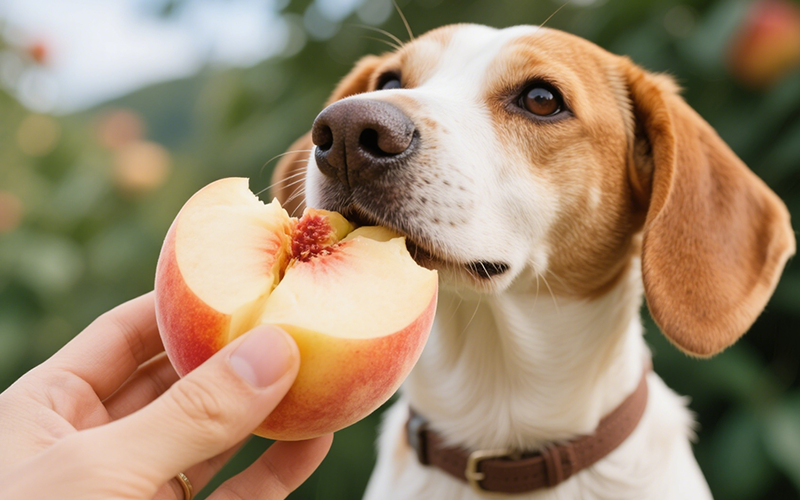
Can Dogs Eat Peaches? Vet Explains Benefits, Cyanide Risks & Safe Serving
- 16 Apr 2025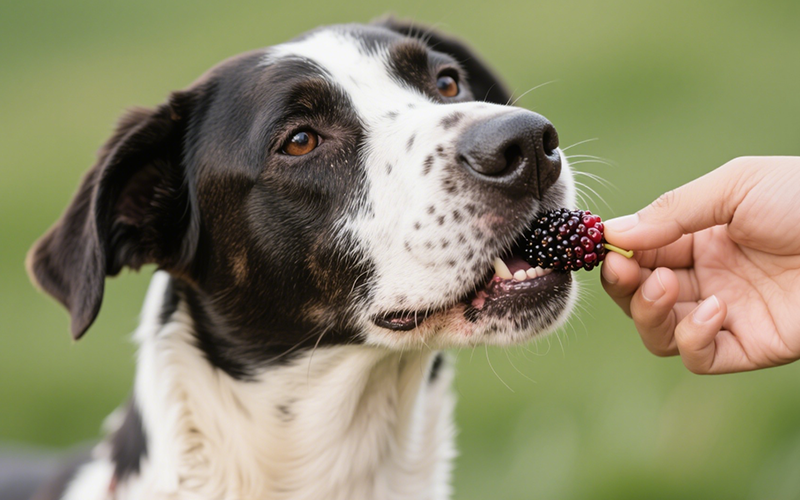
Can Dogs Eat Mulberries? Vet Explains Safety, Benefits & Potential Risks
- 16 Apr 2025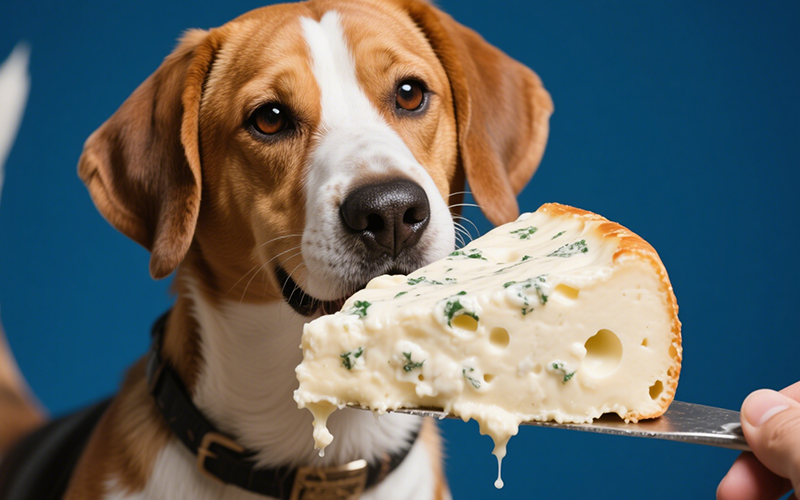
Can Dogs Eat Mozzarella? Vet Explains the Cheesy Truth (Risks & Benefits)
- 16 Apr 2025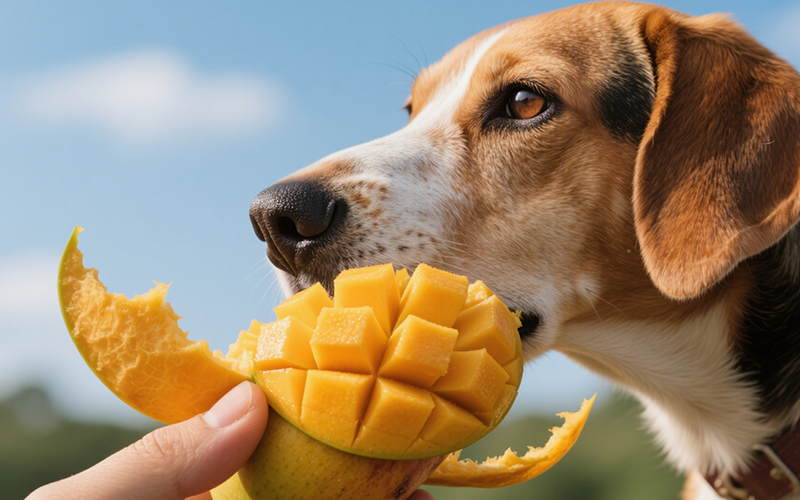
Can Dogs Eat Mango Skin? Vet Explains Why It's a Risky Chew!
- 16 Apr 2025
Can Dogs Eat Maple Syrup? The Sugary Truth & Why Vets Advise Against It
- 16 Apr 2025
Can Dogs Eat Mac n Cheese? Vet Explains Why This Comfort Food Is Unsafe!
- 16 Apr 2025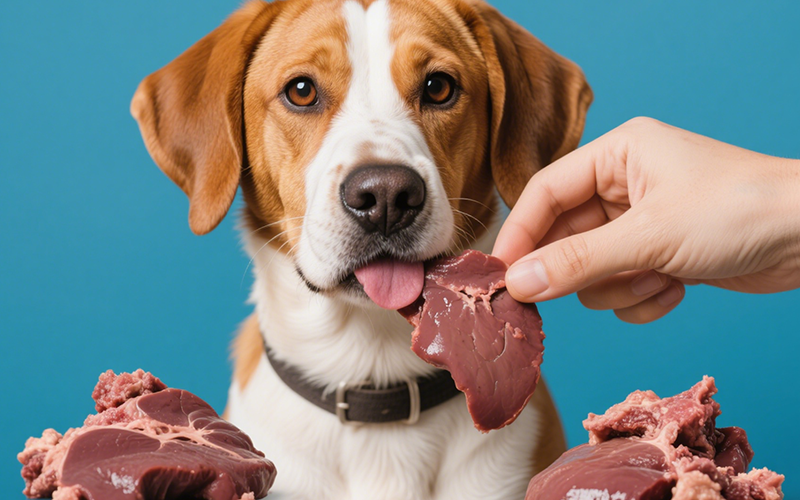
Can Dogs Eat Liver? Vet Guide to This Nutrient-Dense Organ Meat (Benefits & Risks!)
- 16 Apr 2025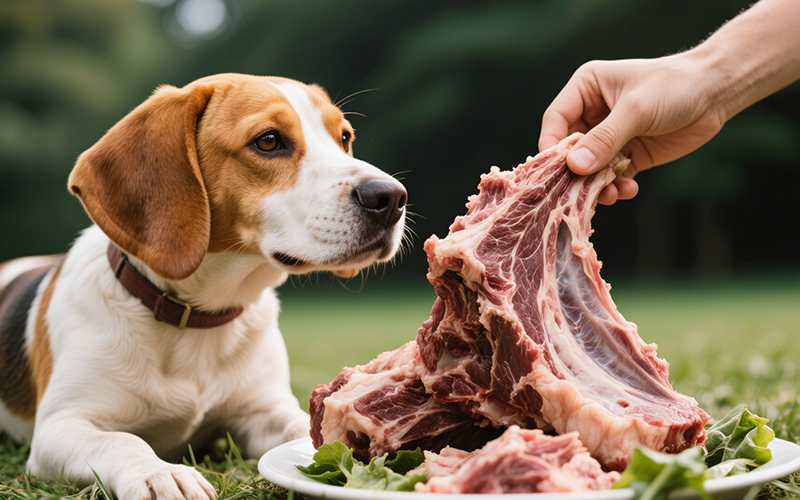
Can Dogs Eat Lamb? Vet Insights on This Nutritious Meat Option
- 16 Apr 2025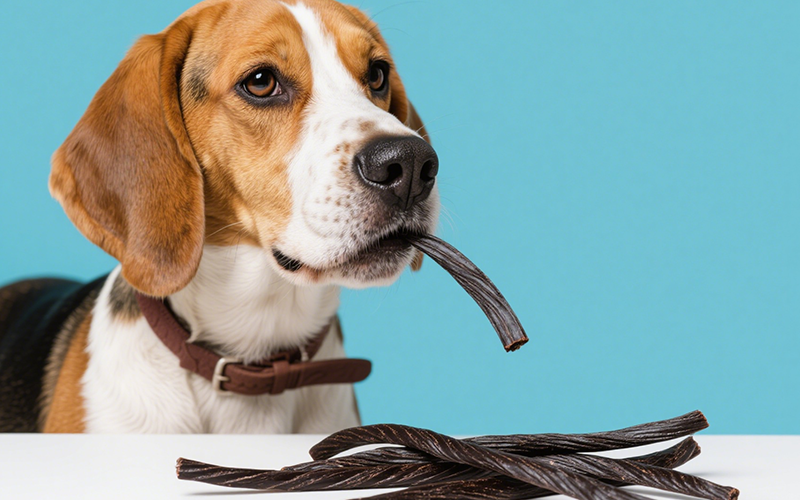
Can Dogs Eat Licorice? The Sweet Danger & Glycyrrhizin Risk Explained by Vets
- 16 Apr 2025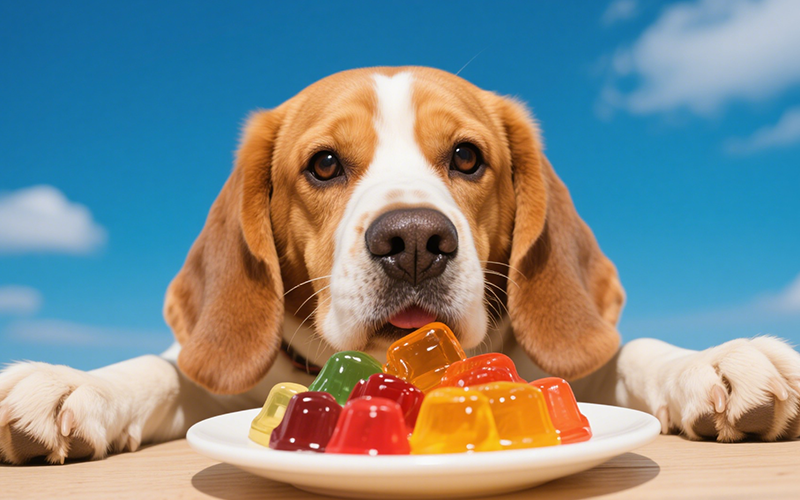
Can Dogs Eat Jelly? The Sweet Truth About Sugar, Xylitol & Why Vets Say No!
- 16 Apr 2025
